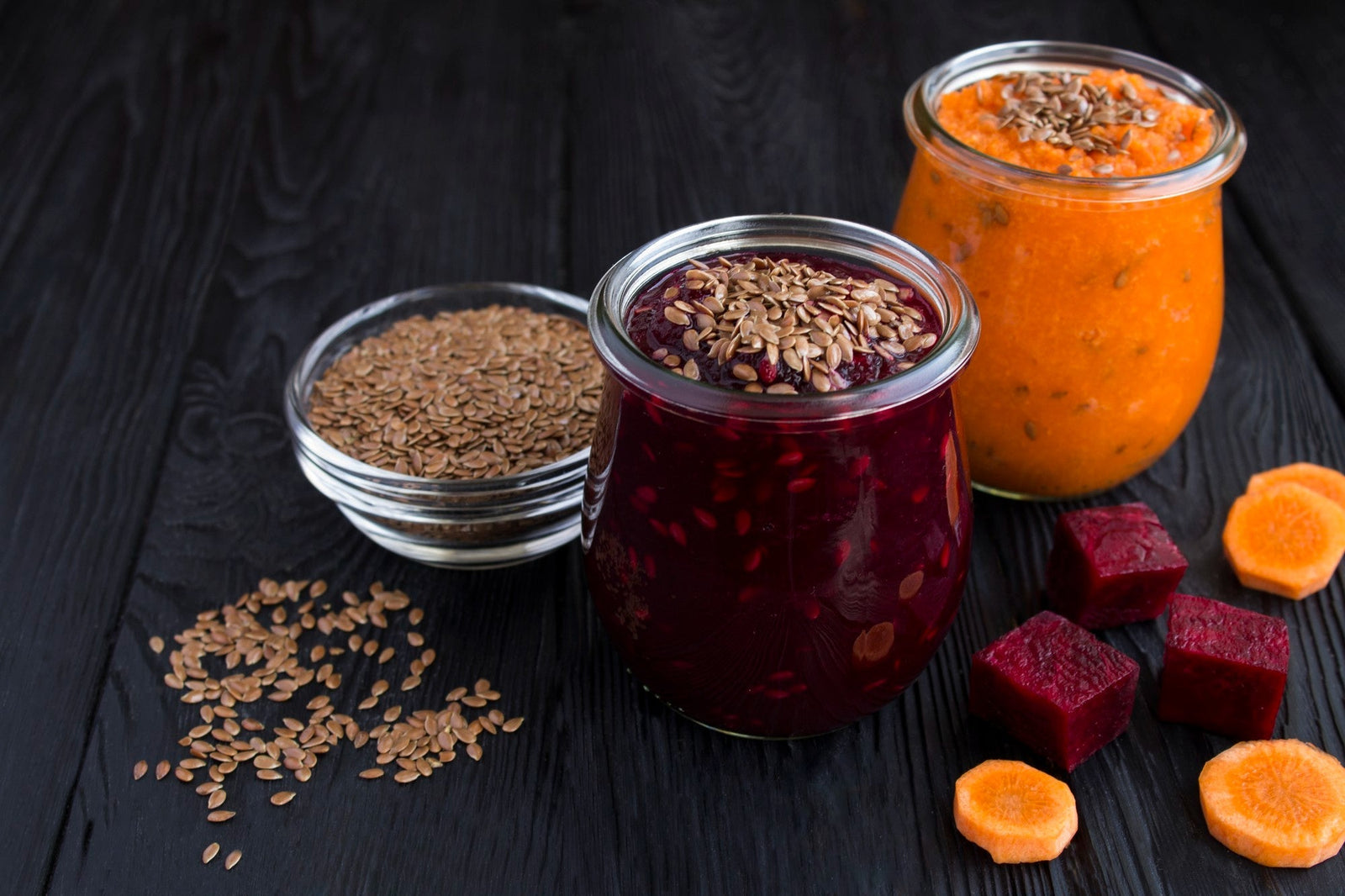
May 17, 2023 5 min read
Barley is a versatile and nutritious grain that has been cultivated for thousands of years. It is used in a variety of dishes, from hearty stews to refreshing salads. Barley is also a great source of fiber, vitamins, and minerals, making it a popular ingredient in many healthy recipes. However, when it comes to choosing the right type of barley, things can get a little confusing. This article will explore the differences between hulled barley and pearl barley.

Hulled barley, also known as barley groats, is the least processed form of barley. It is harvested by removing only the outermost layer of the grain, leaving the bran and germ intact. This means that hulled barley is a whole grain that retains all its natural nutrients.
One of the main characteristics of hulled barley is its chewy texture. Because the bran layer is still intact, hulled barley takes longer to cook than other types of barley. It is also less refined than pearl barley, which gives it a slightly nutty flavor and a hearty texture.
Hulled barley is an excellent source of fiber, with 1 cup of cooked hulled barley containing 6 grams of fiber. It is also a good source of protein, with 1 cup of cooked hulled barley containing approximately 5 grams of protein. In addition, hulled barley contains vitamins B1, B3, and B6 and minerals such as iron, magnesium, and phosphorus.
One downside to hulled barley is that it can be more difficult to find in stores than pearl barley. It is also more expensive than pearl barley, which may be a consideration for those on a budget. However, for those who value the nutritional benefits of whole grains, hulled barley is an excellent choice.
Pearl barley is the most commonly used type of barley in cooking. It is produced by polishing hulled barley, which removes the bran and germ layers. This process gives pearl barley a lighter color and a smoother texture than hulled barley. It also shortens the cooking time, making pearl barley a convenient choice for busy cooks.
Because pearl barley is more processed than hulled barley, it has a milder flavor and a softer texture. It is often used in soups, stews, and casseroles, where its mild flavor and creamy texture can complement other ingredients.
Pearl barley is also a good source of fiber, with 1 cup of cooked pearl barley containing approximately 6 grams of fiber. It is slightly lower in protein than hulled barley, with 1 cup of cooked pearl barley containing approximately 4 grams of protein. However, like hulled barley, pearl barley is a good source of vitamins and minerals, including vitamin B3, iron, and magnesium.
One advantage of pearl barley is that it is widely available in grocery stores, making it an easy ingredient to find. It is also less expensive than hulled barley, which may make it a more economical choice for some.
Both hulled barley and pearl barley can be used in a variety of dishes, depending on their texture and flavor. Hulled barley's chewy texture makes it a good choice for hearty soups and stews, as well as grain bowls and salads. It can also be used in pilafs and risottos, where its nutty flavor can add depth and richness to the dish.
Pearl barley's mild flavor and creamy texture make it a popular choice for soups and stews, where it can add body and thickness. It can also be used in casseroles and grain salads, where its soft texture can complement other ingredients. Pearl barley is also commonly used in breakfast dishes, such as porridge and barley flakes.
When it comes to nutritional value, both hulled barley and pearl barley have similar amounts of fiber, vitamins, and minerals. However, hulled barley is considered to be a whole grain, which means that it retains more of its natural nutrients than pearl barley.
Whole grains are a good source of dietary fiber, which can help reduce the risk of heart disease, stroke, and type 2 diabetes. They are also rich in vitamins and minerals, including B vitamins, iron, magnesium, and selenium.
In contrast, refined grains like pearl barley have had the bran and germ layers removed during processing, which reduces their nutritional value. This is because the bran and germ contain most of the grain's fiber, vitamins, and minerals.
 Consuming whole grains like hulled barley has been associated with a variety of health benefits. This is because whole grains are rich in dietary fiber, which can help lower cholesterol levels and improve blood sugar control.
Consuming whole grains like hulled barley has been associated with a variety of health benefits. This is because whole grains are rich in dietary fiber, which can help lower cholesterol levels and improve blood sugar control.
Whole grains may also have a protective effect against certain types of cancer, such as colon cancer. This is because they contain a variety of nutrients and phytochemicals that have been shown to have anti-cancer properties.
In addition, consuming whole grains like hulled barley may help promote healthy digestion. This is because the fiber in whole grains can help regulate bowel movements and promote the growth of beneficial gut bacteria.
However, it is important to note that the health benefits of whole grains are not limited to hulled barley. Pearl barley also contains fiber, vitamins, and minerals, and can be part of a healthy diet.
When it comes to cooking hulled barley and pearl barley, there are a few things to keep in mind.
Hulled barley takes longer to cook than pearl barley and may require soaking overnight before cooking. To cook hulled barley, use a ratio of 3 cups of liquid to 1 cup of barley. Bring the liquid to a boil, then reduce the heat to a simmer and cook for 45-60 minutes, or until the barley is tender.
Pearl barley cooks faster than hulled barley and does not require soaking. To cook pearl barley, use a ratio of 2 cups of liquid to 1 cup of barley. Bring the liquid to a boil, then reduce the heat to a simmer and cook for 20-30 minutes, or until the barley is tender.
Both hulled barley and pearl barley can be stored in an airtight container in a cool, dry place for up to 6 months.
So, hulled barley and pearl barley are two types of barley that differ in their processing and nutritional value. Hulled barley is a whole grain that retains all of its natural nutrients but takes longer to cook and is more expensive. Pearl barley is a refined grain that is more widely available and less expensive but has a milder flavor and a softer texture.
Both types of barley can be used in a variety of dishes, and are good sources of fiber, vitamins, and minerals. However, consuming whole grains like hulled barley may offer additional health benefits, such as reducing the risk of heart disease, stroke, and certain types of cancer.
Ultimately, the choice between hulled barley and pearl barley will depend on personal preference and cooking needs. However, regardless of which type of barley you choose, incorporating this nutritious grain into your diet can be a delicious and healthy choice.
❤ Try our USDA certified organic Barley Products ❤
Recipes:
Related Blogs:
Comments will be approved before showing up.

January 27, 2025 3 min read
Flaxseed, the tiny yet powerful superfood, is packed with nutrients that can support weight loss. From curbing hunger to stabilizing blood sugar, this guide dives into the science of how flaxseed can help you shed those extra pounds.

December 11, 2024 3 min read
Discover three quick and easy soup recipes featuring organic small red beans. From a classic vegetable soup to a creamy potato blend, these wholesome recipes are perfect for chilly days and busy weeknights. Packed with flavor and nutrition, these soups will warm your heart and soul this winter!

December 06, 2024 3 min read
This vibrant and nutritious Green Lentil Salad combines tender lentils with grilled chicken, fresh vegetables, and a zesty lemon dressing. Packed with protein, fiber, and essential vitamins, it’s the perfect healthy meal for any time of day.
© 2026 Be Still Farms- Real, Fine Organics.
Privacy | Terms | Refund Policy | Organic Certification
